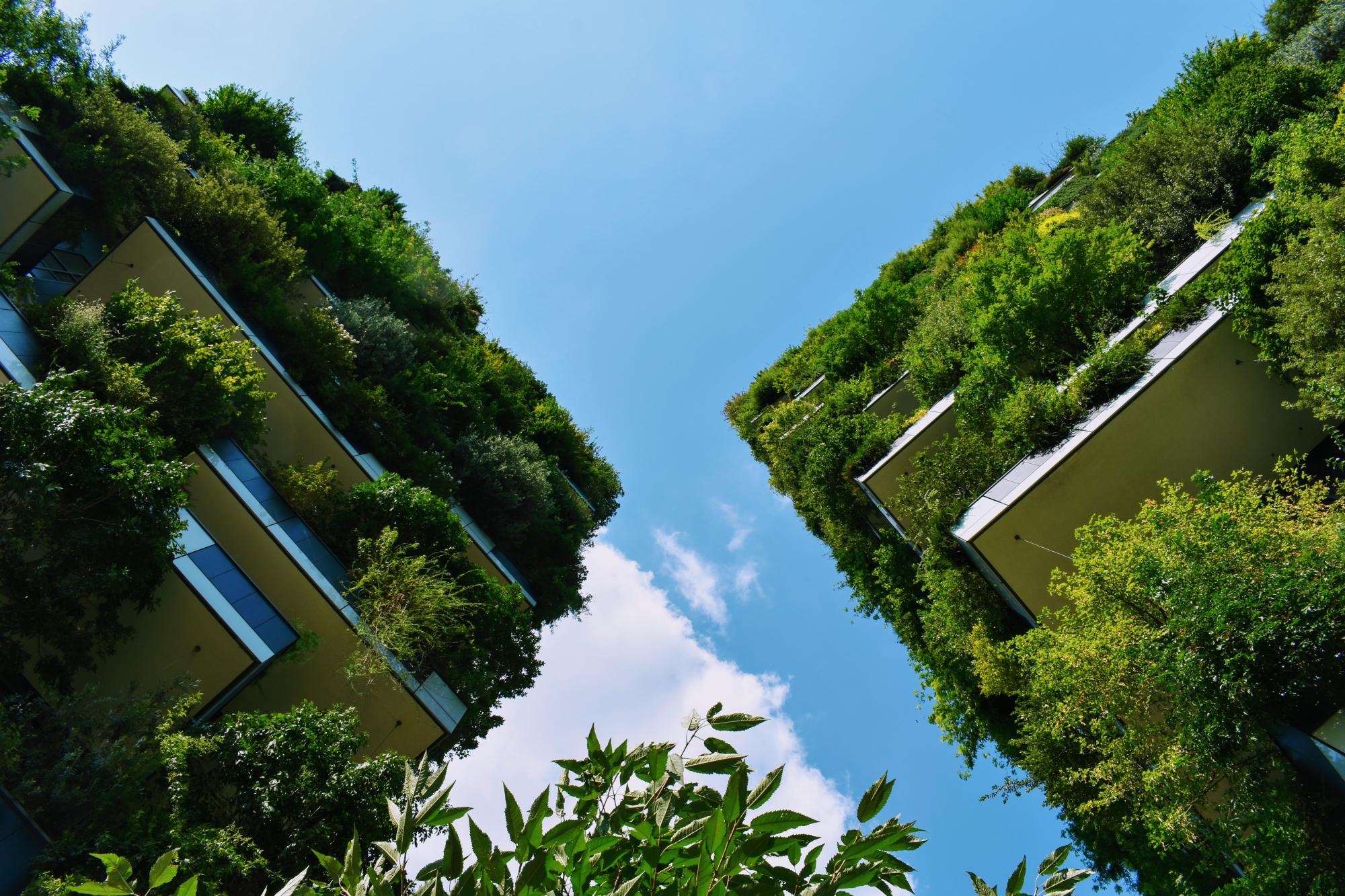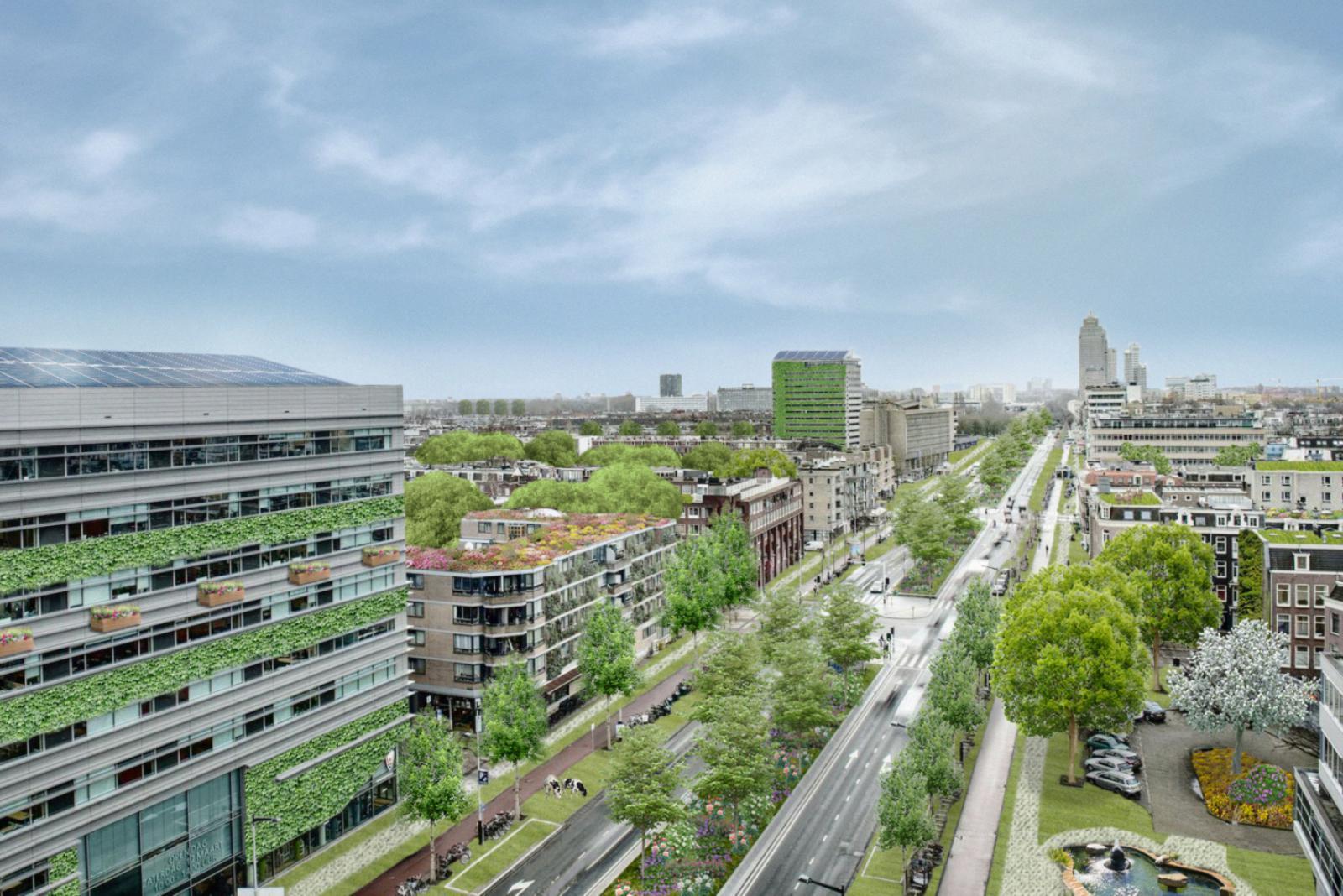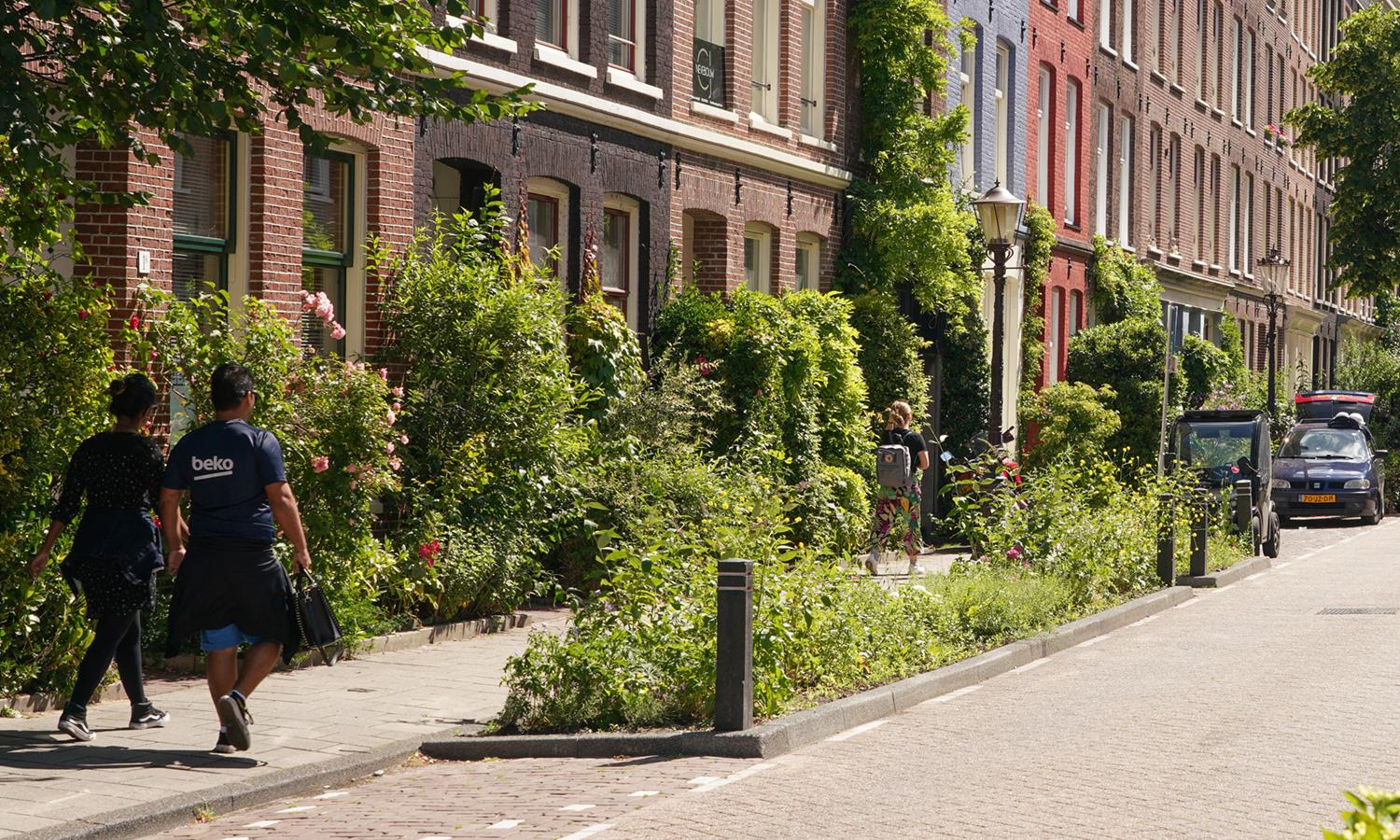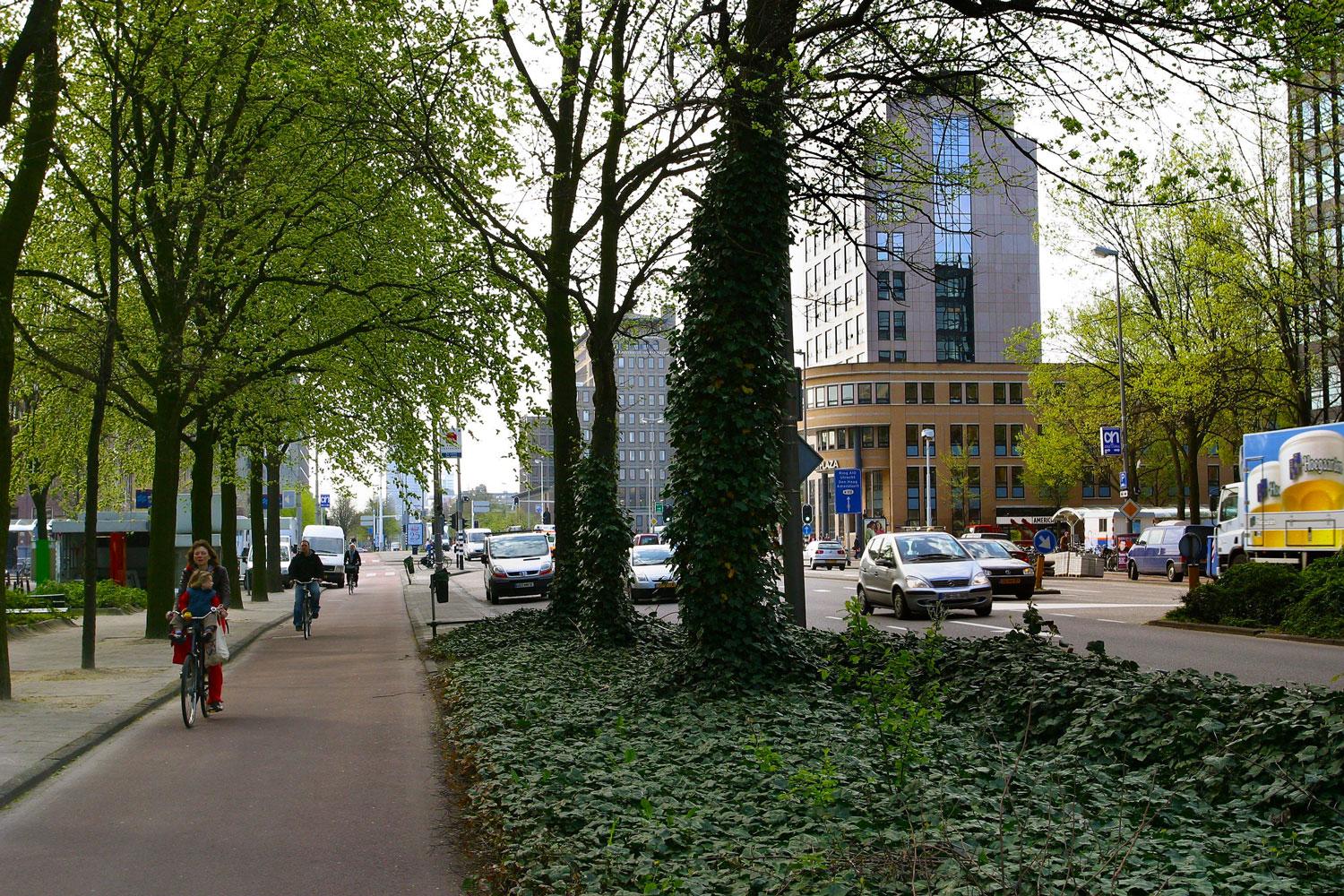The Knowledge Mile Park initiative in Amsterdam aims to transform the long, busy and traffic-heavy street in downtown Amsterdam into an environment greener, more sustainable and more livable through the implementation on various Nature-based Solutions (9). Smaller projects include the creation and maintenance of pocket parks, green walls and facades, green roofs and living labs. The idea of the initiative came from the Knowledge Mile Community that aims at making Amsterdam more green, clean and smart by means of innovative solutions regarding air quality, climate change resilience, biodiversity and social cohesion. (1) municipality of Amsterdam and the business investment zone BIZ Knowledge Mile are working together with partners on the realization of the project (9) The project is still ongoing, although parts of the Knowledge Mile Park are already created in 2016 including one living lab, two green roofs, a green canopy and a pocket park and other parts are planned such as the smart green wall (1)
Overview
Nature-based solution
- Nature on buildings (external)
- Green roofs
- Green walls or facades
- Grey infrastructure featuring greens
- Alley or street trees and other street vegetation
- Parks and urban forests
- Pocket parks/neighbourhood green spaces
- Green areas for water management
- Rain gardens
- Sustainable urban drainage systems
Key challenges
- Climate action for adaptation, resilience and mitigation (SDG 13)
- Climate change adaptation
- Water management (SDG 6)
- Stormwater and rainfall management and storage
- Green space, habitats and biodiversity (SDG 15)
- Green space creation and/or management
- Environmental quality
- Air quality improvement
- Waste management
- Regeneration, land-use and urban development
- Regulation of built environment
- Promote natural styles of landscape design for urban development
- Social justice, cohesion and equity (SDG 10)
- Environmental education
- Social interaction
- Health and well-being (SDG 3)
- Creation of opportunities for recreation
Focus
Project objectives
Implementation activities
Climate-focused activities
Climate change adaptation:
- Increase or improve urban vegetation cover to help reduce outdoor temperature
- Implement green walls or roofs to lower indoor temperature and provide insulation
- Implement sustainable urban drainage infrastructure (e.g. to make space for water)
Main beneficiaries
- Local government/Municipality
- Private sector/Corporate/Company
- Researchers/University
- Citizens or community groups
Governance
Management set-up
- Co-governance with government and non-government actors
Type of initiating organisation
- Local government/municipality
- Non-government organisation/civil society
- Private sector/corporate actor/company
- Researchers/university
- Citizens or community group
Participatory approaches/ community involvement
- Co-planning (e.g. stakeholder workshops, focus groups, participatory mapping)
- Joint implementation (e.g. tree planting)
- Co-management/Joint management
Details on the roles of the organisations involved in the project
Project implemented in response to ...
Financing
Total cost
Source(s) of funding
- Public local authority budget
- Corporate investment
Type of funding
- Direct funding (grants, subsidies, or self-financed projects by private entities)
Non-financial contribution
- Provision of labour
- Provision of expertise
- Citizens (e.g. volunteering)
- Other
Impacts and Monitoring
Environmental impacts
- Climate change
- Lowered local temperature
- Enhanced carbon sequestration
- Environmental quality
- Improved air quality
- Reduced noise exposure
- Water management and blue areas
- Improved stormwater management
- Green space and habitat
- Promotion of naturalistic styles of landscape design for urban development
- Increased green space area
Economic impacts
- Unknown
Socio-cultural impacts
- Social justice and cohesion
- Improved liveability
- Health and wellbeing
- Improved physical health
- Improved mental health
- Gain in activities for recreation and exercise
- Cultural heritage and sense of place
- Improvement in people’s connection to nature
- Increased awareness of flora and fauna as culturally and historically meaningful
- Increased appreciation for natural spaces
- Education
- Increased awareness of NBS and their benefits
Type of reported impacts
Presence of formal monitoring system
Presence of indicators used in reporting
Presence of monitoring/ evaluation reports
Availability of a web-based monitoring tool
References
2. Unknown. (n.d.). Knowledge Mile Park. Website not available
3. Amsterdam Creative Industries. (2016). Opening Ruyschtuin – Park om de hoek – 19 oktober 2016. Accessed on November 2, 2020, Source link
4. De Gezonde Stad. (n.d.). Park om de hoek. Website not available
5. De Dakdokters. (n.d.). Daktuin Zoku. Accessed on November 2, 2020, Source link
6. Amsterdam Rainproof. (2016). Knowledge Mile. Accessed on November 2, 2020, Source link
7. Amsterdam Rainproof. (2016). Daklab. Accessed on November 2, 2020, Source link
8. Gemeente Amsterdam. (2017). Gebiedsplan 2017 Stadsdeel Oost, Oud-Oost. Amsterdam: Municipality of Amsterdam. Website not available
9. Knowledge Mile Park. (2020). Introduction - Knowledge Mile Park. Greening and sustainability together. Accessed on November 2, 2020, Source link
10. Knowledge Mile Park. (2020). The value of green - interview. Accessed on November 2, 2020, Source link
11. Knowledge Mile Park. (2020). Projects. Accessed on November 2, 2020, Source link
12. Rooftop Revolution. (n.d.). Knowledge Mile Park. Accessed on November 2, 2020, Source link



